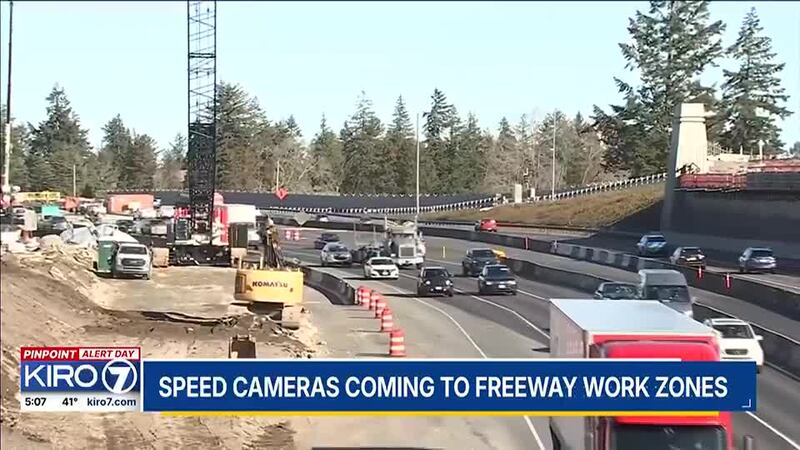SEATTLE — Speeding is one of the leading causes of crashes in work zones, according to the Washington State Department of Transportation (WSDOT). If you get a lead foot the next time you drive through a construction zone- it could cost you.
In an effort to crack down on speeders, WSDOT will begin using a work zone speed camera for certain projects.
This new safety tool involves a partnership between the Washington State Patrol (WSP), courts, the legislature, unions, and industry supporters.
The trailer-mounted cameras will rotate between construction, maintenance, and emergency projects where speeding is a problem, according to WSDOT. Signs will warn drivers when a camera is in a work zone. When possible, radar speed feedback signs will also show drivers how fast they’re moving.
The cameras calculate the average speed of a vehicle over 30 feet of movement.
There is no fine for the first work zone speed camera infraction, but it’s $248 for the second and every violation after that.
“We would be ecstatic if these cameras never resulted in infractions because drivers changed their behavior,” said Washington Secretary of Transportation Julie Meredith.
Images of speeding vehicles will be forwarded from the camera vendor to WSP. Troopers will then screen them and determine whether a violation was committed. If it was, a notice will be sent to the vehicle’s registered owner.
A 2024 industry study from the Associated General Contractors of America found that nearly two in three contractors reported a crash in a construction work zone last year. In Washington, WSDOT says we have about 1,345 work zone crashes yearly— and that doesn’t count the close calls.
“I could tell, just from the sound of the engine, that it was a bigger truck,” said Sheri Knowles who works in work zone traffic control.
Knowles was about to come face-to-face with a box truck as it slammed into a road barrier in her work zone.
“It was something I hope to never see again,” she said.
She is hopeful the new cameras will serve as a wake-up call for drivers.
“Speed equals reaction time,” Knowles said. “The faster you’re going, the less reaction time you have.”
The first camera will be launched in the coming weeks. More cameras are set to be added in the next few months with the goal of up to 15 cameras in operation by 2027.
©2025 Cox Media Group








